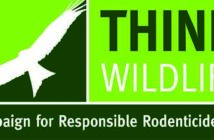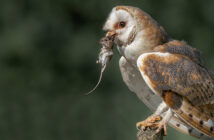It could be argued that the most important activity within the UK Rodenticide Stewardship Regime will be finding a way to control the supply of professional rodenticides. Control the supply and youll keep professional products out of unqualified hands. And thats a huge step in the right direction.
So far however, much of the talk and the majority of the column inches (online and in print) about stewardship, have focused on what individual end-users have to do to make sure they comply. This is understandable as, clearly, it is essential that all pest professionals intending to use ‘stewardship regime’ rodenticides need to know what qualifications they must hold and, even more importantly, what training they need to complete to be ready for stewardship. Upstream from the end users however are supplier businesses – professional pest control distributors such as Barrettine, Killgerm, Edialux (SX), 1env solutions and PestFix, farm supply companies, internet traders and, of course, the manufacturers who hold the product authorisations.
| Key announcement Just before Christmas a key announcement was made by the Campaign for Responsible Rodenticide Use (CRRU) Point of Sale work group. Fearing it would be lost in the Christmas festivities we have waited until now to explain the content of that announcement and we’ve spoken to the work group leader, Killgerm Group’s managing director Rupert Broome about the significance of the new ‘point of sale declarations’ that the his stewardship work group has put together. “Over many months, a huge amount of work and thought has gone into the creation of these very important guidance documents,” he explained. “The challenge was to make a complex situation simple and to ensure the resulting declaration templates are distinct and practical to use by all companies within the supply chain.” The declarations themselves are pretty straightforward. |
Leader of the Point of Sale stewardship work group, Rupert Broome |
|
There are three documents:
Each declaration is just one side of A4 and not that much detail is required so, for most people, these will be easy to complete. The declarations can be used as standalone documents or their contents can be incorporated into company supply contracts. Supplier companies, whether they are manufacturers, distributors, farm supply companies or Internet traders are responsible for checking the credentials of the supply businesses or end-users that they supply products to. So, the responsibility for getting the correct declaration signed, keeping the documentation on file and checking that customers comply cascades down the supply chain. For sales to end-users the supply company must have a copy of all proof of competence certificates (or Farm Assurance membership) on file with the declaration document. Within the supply chain it is anticipated that on-site checks may well be required and provision is also made for ‘mystery shopper’ checks. Internet sellers cannot rely on self-certification by end-users. Just like all other suppliers of professional use rodenticides with stewardship conditions they will have to hold copies of CRRU approved certificates or farm assurance scheme membership prior to making any sale to end-users. Well thought through Clearly for some companies there is going to be a lot of extra paperwork to get the system up and running. To smooth things through, if a customer is already known to a supplier they will not need to provide any photo ID. However, for new accounts or cash accounts, photo ID will be needed along with the evidence of correct certification. The work group has worked alongside the Health & Safety Executive to develop these documents and, whilst stewardship is voluntary, it is important to remember that all 14 authorisation holders have signed-up to it so, failure to follow the requirements of these declarations is likely to result in the withdrawal of supply. Users should also remember that product labels are legal documents and failure to follow them risks prosecution. The Point of Sale work group has also published a useful set of questions and answers which are now also in the Pest library. All downloadable documents were correct at time of publication but please check CRRU stewardship website for any subequent versions. |
||



